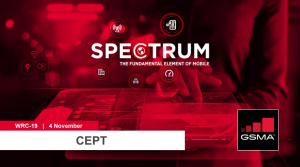WRC-19: CEPT lunchtime seminar on mmWave spectrum for 5G

“There is a unique opportunity at WRC-19 for regulators to give Europe the tools needed to be a global leader in the development of 5G, in order to transform the region’s economy and society and take advantage of the limitless possibilities 5G can offer.” (Brett Tarnutzer, Head of Spectrum, GSMA)
The GSMA on Monday, 4 November welcomed delegates from CEPT to a lunchtime seminar at WRC-19 to discuss Agenda Item 1.13 with a focus on mmWave spectrum for the future of 5G.
Speakers from Telia, Ericsson and the GSMA talked about how the right conditions for mmWave spectrum at WRC-19 can change how connectivity drives Europe forward.
At the seminar, the GSMA also talked about its new report on mmWave Use Cases, and the impact they will have on all aspects of society. The performance benefits of mmWaves, including ultra-high speeds and low latencies, will drive the revolutionary impact of the most advanced 5G services. Use cases such as expanded broadband access and advanced healthcare stand to profit greatly from access to mmWave spectrum.
Europe is expected to deliver $135 billion in GDP from mmWave 5G by 2034. But the economic impact, along with all the underlying use cases that make it possible, is only possible if mmWave spectrum is identified for IMT at WRC-19 with reasonable conditions.
The mobile industry is asking for the IMT identification of:
• 26 GHz (24.25-27.5 GHz);
• 40 GHz (37-43.5 GHz);
• 50 GHz (45.5-52.6 GHz); and
• 66 GHz (66-71 GHz).
The presentation from the seminar is available here.
The GSMA’s full line-up of WRC-19 collateral can be found here.